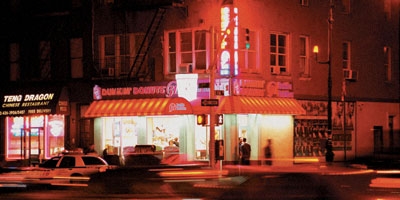Inside DVD Piracy Page 5

Once the master copies were burned, the cammers would have their uptown meeting with wholesalers - typically Harlem bodega owners - who'd pay anywhere from $40 to $500 for each disc ($1,000 if the movie hadn't yet been released in theaters). The wholesalers would also order the necessary number of case sleeves from the printers at 6 to 8 cents a copy.
Next, the wholesalers sold their masters - along with thousands of accompanying case sleeves (at 13 cents each) - to retailers in New York City and other burgs throughout the U.S. (Wholesalers make their profit not from the discs, on which they break even, but by marking up the price of the sleeves.) The retailers then pressed massive numbers of duplicates from the masters and, because the transfers were all digital, the copies tended to be as good as the originals. The copies were then packaged with the cases and sleeves and sold on the street for $5 to $10 in New York City, where copies were plentiful, and for about $20 in other cities, where copies were scarcer. (By the way, it's not a crime to buy a bootleg, just to sell one.)
Meanwhile, overseas wholesalers would wire thousands of dollars to the first group of perpetrators so they could access and download the movies from the Internet. The manufacturing process was then repeated all over the world. (The feds' international investigation is still ongoing.)
Not all pirated films (whether on the Web or on DVDs) originate from camcorders in movie theaters. For example, screeners sent to members of the Motion Picture Academy (usually for Oscar consideration) have been duped - though those instances are pretty rare, especially now that screeners are digitally "watermarked" so they can be traced to the source. There have also been reports of projectionists "borrowing" film reels overnight for illicit purposes. Plus, you're probably aware that legitimate DVDs, though encrypted, can be descrambled and copied with the right software.
- Log in or register to post comments



































































